Forging Gender Equality – How Far And To What End
By Smita Mukerji

Is the prospect even a question today?
International Women’s Day is an occasion to celebrate the marvellous strides made by women in various fields, to acknowledge their contributions in all spheres of life. Breaking down of traditional barriers and prejudices has seen women gaining ground in various professions.
On Tuesday, March 5, the Defence Minister, Ms Nirmala Sitharaman, announced that women officers, who were until now inducted for Short Service Commission (SSC) of up to 14 years, would now be eligible for permanent commission in all ten branches of the Army. Until now this was allowed only in two branches: Judge Advocate General (JAG) and Army Education Corps (AEC). The other eight branches with restricted service tenures for women were: Corps of Signals, Engineers, Army Aviation, Army Air Defence, Electronics and Mechanical Engineers, Army Service Corps, Army Ordnance Corps, and the Intelligence Corps.
The move was preceded by a government decision in February 2016 announced by the then President of India, Mr Pranab Mukherjee, of inducting women in all combat roles in the armed forces. This was gladdening news followed by jubilation in most quarters, the general refrain being that ‘India has now come of age’. Such developments do carry a meliorist appeal. The sentiments expressed were no doubt well-meaning, but gloss over the essential question: was the resistance hitherto regressive in the first place?
It would probably strike a discordant note in the euphoria surrounding these decisions, but it is important to subject some of these forays by women to circumspection. It is mystifying that even without a lobby actively pushing for it and in spite of reasoned voices of experienced military men that have over the years consistently advised against it, the government decided to go ahead with the rather sudden decision.
To dismiss as ‘chauvinism’ the well-informed objection of military specialists would be an utterly unwarranted accusation against those who are arguably among the most respectful and courteous in their bearing and progressive in attitude towards women. In spite of the fact that experiences of all countries where women have been inducted in combat roles has been far from encouraging, the Indian government made the move with perplexing alacrity. The technicalities surrounding this issue have been elaborately laid out several times by minds better than mine, specialists knowledgeable about all aspects of combat, so I will attempt to address it here only from the position of logic and principle.
The military of several countries world over face pressure to lower physical training standards and compromise efficiencies, forced to accommodate a misplaced ideal of ‘equality’ between men and women, which in fact does not exist in nature. There is no doubt that men and women are and must always be held equal in status, but they are not equal in talent, calling, aspirational qualities, self-concept and indeed in their very physical mould. Of course they are meant to complement each other and the roles they fulfil should not be an entrapment that limits personal ambition and choice of a vocation that fulfils them, but some basic framework of nature must be acknowledged and honoured instead of improvident blasting of ‘traditional barriers’. Some of these in fact follow from wisdom accrued from experience over ages.
Just as child-birth is to females, superior physical strength is a male’s unique preserve. They are different even at birth, male babies born heavier, with bigger limbs. Males show interest in combative activities in the very early years, indulging in more rough-n-tumble games, physical fights than females who are no doubt equally competitive but express themselves differently, mostly in verbal skills. This is not a schooled attitudinal difference (as admittedly some behaviours are) nor a result of prejudice. These are part of our inescapable physical reality. Modernity has ensured a vast overlap in roles that males and females play and the professions pursued by them and efforts at gender-mainstreaming too must continue in all sectors, but this ideal of equal opportunity should not turn into an unrealisable goal of achieving 50-50 parity in all occupations as an indicator of equality, and that until this were achieved there is something frightfully wrong in society. Forging such an unrealistic equalization of genders is not only impossible, it is undesirable.
There are many professions that exclusively seek female professionals without excusatory justifications. It is a matter-of-fact acknowledgement that women do typically possess the natural (not acquired) skills and talent to fulfil some roles. There are some others like mining, which due to potentially hazardous effects on women’s health are restricted for them. One such clear area of demarcation is the military, more specifically, armed combat, but one in which prior commonsense is easily abandoned. Commonsense tells me that even my teenage son is physically stronger than me, that even a man of smaller stature is stronger than a bigger woman, but the ideal we want to push is that women tackle toughly trained enemy soldiers in a fierce, often brutal physical battle!
From experiments world over of women inducted in combat, the stark conclusion staring us in the face is, that no matter how hard women train they can never match males in sheer physical prowess. These demands in military and in specialized combat training are even more exacting which even average males would find difficult to withstand. In order to induct women into combat these standards are lowered considerably which compromises overall strength and performance of the forces, and according to defence sources, even these the overwhelming majority of women fail to clear.
In September 2012, the quarterly course held at the Marine Corps Base in Quantico, Virginia, began accepting female officers fresh out of training as part of a larger research effort into the feasibility of opening ground combat jobs to women. The Marines’ combat test period in April 2015 had ended without a female graduate.
“In April 2015, after two-and-a-half year period in which the tough US Marine Corps’ Infantry Officer Course became gender-integrated for research ended without a single female graduate. The final two participants in the Marines’ experiment with training women for ground combat started and failed the IOC on April 2. Both were dropped that same day during the grueling initial Combat Endurance Test.”
Women by no means lack qualities of courage, strength of character, perseverance or spirit. Some of the bravest men in our history have been groomed by their mothers. Many women have been exceptional rulers! But a clear observation is that this does not manifest in physical courage and aggression. This characteristic is simply not a part of the feminine being. Due to their natural physical vulnerability, when imperilled, their first instinct is self-preservation. This is dramatically opposite to the response of males, who respond typically with aggression. We witness it played out in the natural world all around us and the way males and females have evolved.
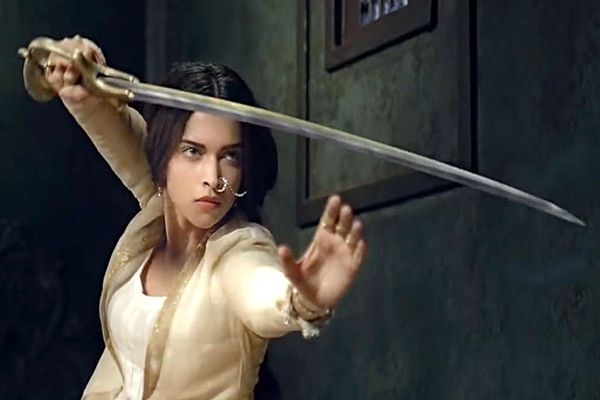
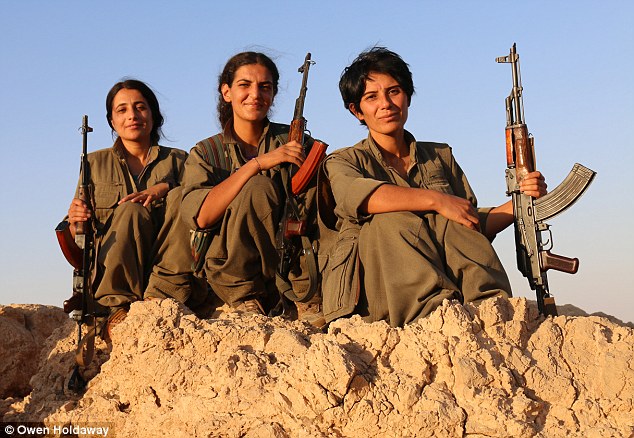
Cited many times in the context of this debate is the example of warrior queens of yore who admittedly are dotted all across our history in all parts of this much invaded land. However, one must remember that these were not ordinary women but exceptionally spiritually inspired persons. Moreover, they were all either rulers or regents and were almost always heavily guarded by a close group of elite soldiers. In entire human history, including India, women have never been part of a standing army. As much as we might find fantastic images of women at arms in movies hugely glamorous (e.g. the character of sword-wielding Mastani in single-handed tussle with battle-hardened Maratha soldiers who fall like skittles before her) fact is, these are simply false! Rajput women, like most women from ruling classes were trained in arms, but this was entirely for self-protection in extreme situations, never for actual combat. Moreover, there is an important distinction that one must be aware of: The past saw many situations of extreme peril, a struggle for survival being faced with complete annihilation, fight-till-the-death and till the last person scenarios. A familiar example in modern times would be that of the Yezidi people’s fight back from the brink against the Islamic State (ISIS). Governments must seriously consider, are we building suicide squads for such conditions or a standing army of professional fighters? Of course, each male soldier too is inspired by devotion towards his motherland and ready to make the ultimate sacrifice, but what could be the possible justification for knowingly sending in the relatively physically more frail to their deaths when there is no such dire straits?
Even while selecting men, the best, the physically most capable are selected to serve in the defence forces. The rejection rate for Indian armed forces is in a ratio of hundreds. Moreover, if standards are lowered for one group, why should there not be a quota for disabled people as well? The argument would be valid citing the example of the one odd uniquely inspired and spirited disabled individuals who have climbed the Everest or demonstrated extraordinary physical feats. There could be similar disabilities or perceived ones, on the basis of caste or economic status, which could equally form the criteria for recruitment rather than capability.
One clear admission of the differential in physical performance of males and females is the arena of sports, where men and women compete in separate categories. In war there are no separate categories to match fighting capabilities, but the undeniable differential remains.


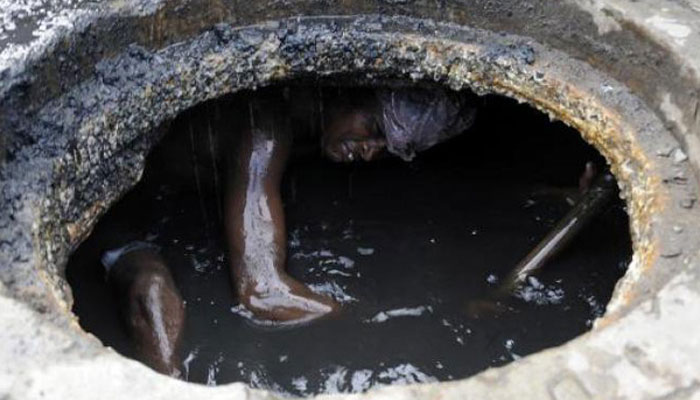
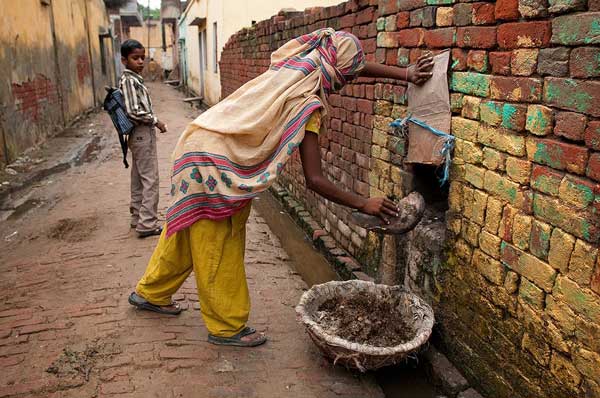
In reality, most professions are not evenly represented in terms of gender. But interestingly, lobbying for admission into occupations traditionally restricted for women concentrate only on the more glamorous professions. There are several areas like sewage cleaning, mining, deep-sea fishing, logging, attending to the dead etc. that have barely any women in them, but these unpleasant and dangerous areas of work are not taken up by lobbyists in the quest for ‘equality’. Jobs like nursing, cleaning, teaching, which can be equally ‘dirty’ and demanding but are less hazardous, are dominated by women on an average 9:1 times greater in strength than men. But males do not demand entry to these as a matter of ‘equal rights’. The most logical explanation therefore for inequitable representation of genders in various professional fields therefore is ‘talent’, not discrimination. Quite simply, people take to what they are cut out to do, and this boils down to evolutionary psychological and physical capacities, not choices determined by socially inculcated behaviour. The most significant factor for decision makers to assess empowerment therefore should be equal opportunity, not numbers. Viewing the history of development of human society, greater social differentiation was indicative of a higher degree of specialisation and development, not active discrimination. Humanely justifiable distinctions between genders, occupational groups are therefore natural state, whereas equality neither exists nor is possible naturally. And there is no way preference for males in the military can be described as inhuman.
This brings the focus on the actual underlying feeling that drive demands to induct women in the armed forces: a notion of privilege. The quest for greater representation is fundamentally dishonest. It is not matched with the real capability of women, instead carry a sense of entitlement. This is borne out from the fact that women want to join only in the capacity of officers, but seldom as common soldiers. The male officer in contrast knows that he can and will fight as good as the men he commands into battle. This is especially true for Indian armed forces where officers lead their men in battle rather than issuing orders behind the lines.
The US discovered during the Gulf War deployment that women soldiers were deliberately getting pregnant from male colleagues to escape combat duties. A friend in the Army recently narrated to me on condition of anonymity a similar predicament of the Indian armed forces: He had a firsthand experience of the hesitation among lady officers to go forward in a near war situation during ‘Operation Parakram’ in Second Corps. In the entire armoured division there had been only one lady officer who was willing to go forward for the deployment.
The Indian Air Force, since October 2015 when it announced that women cadets would be given the choice to be fighter pilots, on an experimental basis for a period of five years, are faced with a peculiar situation: no women trainee cadets have since opted to fly combat jets. In the next two batches since then, women cadets have opted to fly either transport aircraft or helicopters.
All in all, decisions regarding recruitment and deployment are still being debated with many unresolved areas and there exist significant grounds for revisiting the previous decision by governments. This raises the question, why do we feel compelled to pay lip service to an ideal which patently is not consistent with our experience and doesn’t serve us? The advantage for women (of lowering induction standards) has already been abolished in some countries (e.g. Switzerland) and it is being considered in some others like Israel.
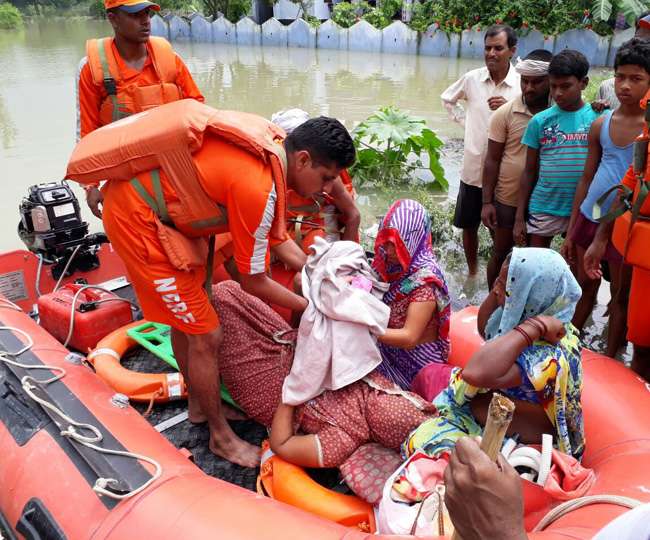
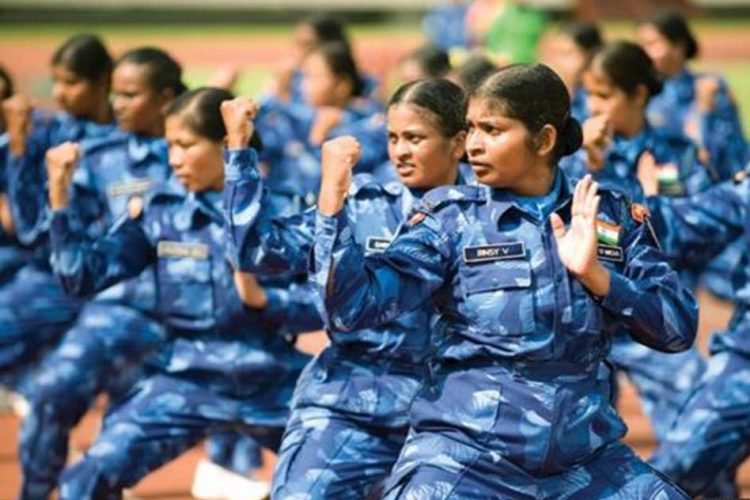
Women can be inducted in larger numbers in several other armed forces where their contribution would be meaningful, e.g. Police, Railways Police Force, Central Industrial Security Force, in combat operations of Coast Guards, where there is less physical proximity with the enemy/hostile elements, and in Forest Protection and National Disaster Relief Force, etc. (There is a crying need for disaster relief operations to be made gender-sensitive and significant presence of females in the force would be invaluable in achieving this, but their representation negligible in terms of numbers.) It appears the move was prompted more by a need to make a statement of ‘modernity’ by submitting to a fashionable trend, rather than pragmatism.
The much touted model of the Israeli Defence Forces (IDF) is also exaggerated. Reports from ground tell entirely a different story: that male combatants are terribly hampered owing to the compulsion of ensuring the safety of their female colleagues during operations. Involvement of females is limited to support roles and almost never in frontline situations or close combat positions where there is risk of capture, hazardous environs like armoured tanks, etc. The battalions they (wo)man are deployed in borders with friendly countries. Even otherwise there are numerous nuances with respect to restrictions in deployment of women in combat units and they are only attached (not assigned) to combat units. This means that women cannot render optimal service in combat roles. The argument of equality is turned on its head right there. The decision of granting permanent commission to women in the different armed corps too should ideally be weighed against these considerations.
Even considering roles not involving direct physical encounter with the enemy, e.g. fighter pilots, if a woman officer were to crash in enemy territory would her physical integrity and dignity be entrusted to the enemy’s good conscience? The most recent incident was the capture of Wing Commander Abhinandan Varthaman, who fell in enemy hands following an encounter in the course of a defensive patrolling operation, not even an offensive operation. Consider the case of the horrendous fate of Captain Saurabh Kalia. Does the government bear the responsibility if such (or even worse) should become the fate of a woman officer? Are we so unmanned civilisationally that we let this happen? Should it become culturally acceptable to expose women to the risk of being captured and tortured and possibly sexually assaulted? Of course, such violations are not acceptable even for males, but there are some deep psychological factors that dictate what is acceptable in human ethos which in turn define what constitutes our feelings about ‘masculinity’ and ‘feminity’. It is a sense deeper than socially established roles that are foundational to our physical being, since as much as there is a push for modern idealisms and uniformisms, being ‘male’ and ‘female’ are not imposed ideas. They are what substantiate our very biological presence.
Males and females have not evolved independently, but interdependently. It is part of the consciousness of ‘being male’ to have the reassurance that they are capable of defending what is rightfully ‘theirs’ to defend, which includes females. This is not born of chauvinism or a tendency to control, but a strong protective instinct, as natural as that of females in protecting and nurturing with what they are equipped to do. This instinct is vital to the overall survival of a race and the species. Consequently, as has been observed, males experience extreme emotions of helplessness and rage and are deeply psychologically impacted by the sight of aggression upon women and/or their getting seriously injured before their eyes, which has the capacity to sink their morale.
“Lt. Col. Dave Grossman briefly mentions that female soldiers in the Israel Defense Forces have been officially prohibited from serving in close combat military operations since 1948. The reason for removing female soldiers from the front lines was due less to the performance of female soldiers, and more due to the behavior of the male infantrymen after witnessing a woman wounded. The IDF saw a complete loss of control over soldiers who apparently experienced an instinctual protective aggression that was uncontrollable, severely degrading the unit’s combat effectiveness.”
In a similar vein, Melody Kemp, author of ‘Working for Life: Sourcebook on Occupational Health for Women’, mentions that the Australian military has also voiced similar concerns saying their soldiers “are reluctant to take women on reconnaissance or special operations, as they fear that in the case of combat or discovery, their priority will be to save the women and not to complete the mission. Thus while men might be able to be programmed to kill, it is not as easy to program men to neglect women.”
Once long back, around the time the movie ‘Titanic’ was released, I and my sister sat discussing the episode of the sinking of the ship and she wondered aloud, ‘why, when before the terrible impending fate both men and women were equally helpless, did the men perform the ultimate deed of chivalry, giving up their lives to save women and children? They could have easily saved themselves. Why was it such a dishonourable prospect?’ I think now it is the manner in which men give back to nature. For women being gifted with the power to give birth, a single most spectacular feat which men are incapable of, this debt is automatically neutralised. As nature’s compensation men are uniquely abled to fight and defend, and chivalry, much reviled by feminists today, is a man’s way of showing that his superior strength will be used to protect and nurture. If womanhood is celebrated by honouring motherhood, why should men not receive the due for fulfilling their calling in what only they are uniquely gifted by nature and capable of fulfilling? Women’s quest should not be to envy and emulate manliness, make men feel guilty about it and try to destroy it, but to cherish it and positively reinforce it. Modern concepts of emasculated men and masculinised women lead to loss of polarity and attraction. It is a dreadful compromise of both genders.
I have at several places heard analogous mentions to the concept of shakti in Hinduism to give credence to the decision of women being inducted in combat. These however only expose a lack of understanding of this profound symbolism. Shakti is the energy that powers the divine ground of existence. The war-godess ‘Durga’ is a conceptualization of the primordial, divine, creative energy, invoked to destroy evil. It is important to note that Her vehicle is a charging male lion. It is a representation that harmonises the masculine and the feminine creative energies. It is far, far from being an all-female Amazon icon.
To conclude, the Indian Government’s decision as it stands now appears to be an experimental measure for a period of five years and will be reviewed around 2021. I hope what guides their decision at that point is the unfailing consideration of dharma, the faculty of contextual discretion to determine the righteous course of action, instead of a blind toeing of new-fangled ideologies.
Cover Picture:
First three female fighter pilots of India (Source Elle)
Featured Image Source: War Fighter
Article first appeared on March 17, 2016 here.
